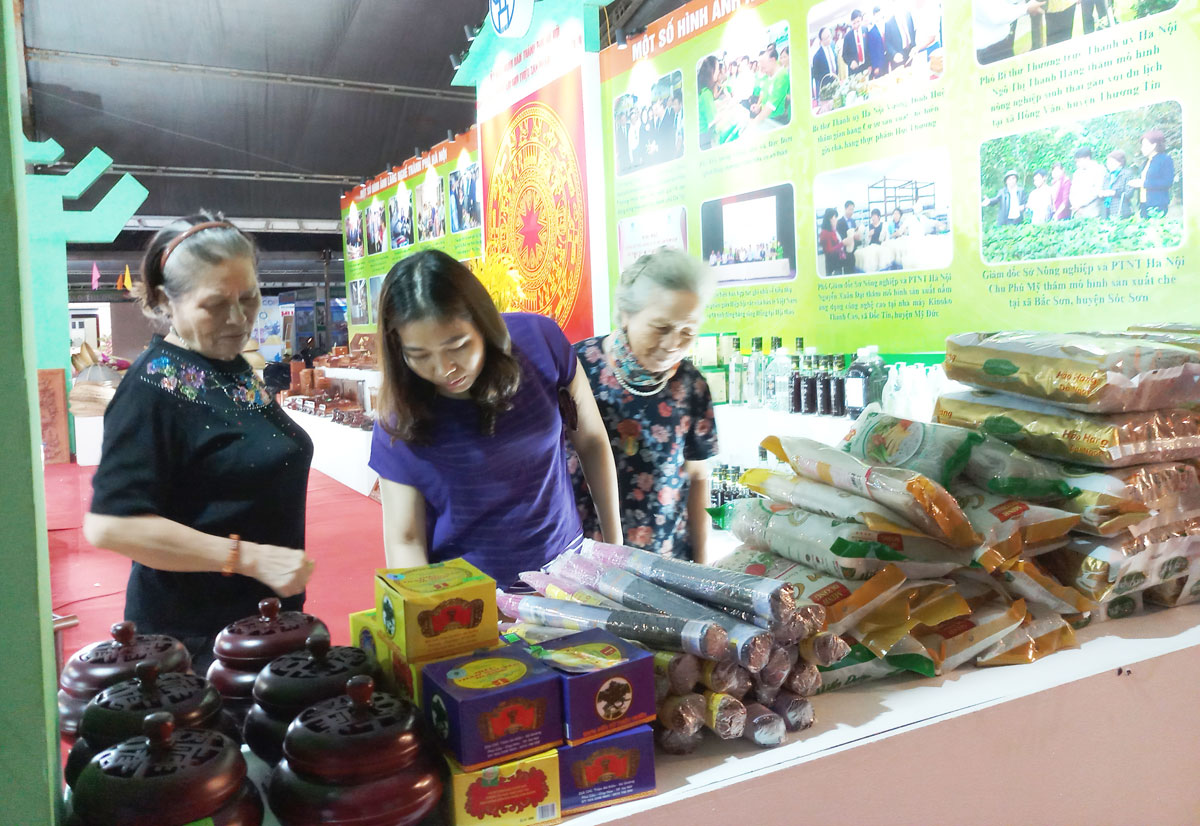



The province annually organises trade fairs to introduce agricultural and rural industrial products as well as those made under the One Commune One Product (OCOP) programme. The photo was taken at a trade fair featuring OCOP products from Hoa Binh and the northwestern region.
In recent years, the provincial Party Committee and People's Committee have directed relevant agencies and localities to reinforce trade promotion via helping businesses expand their markets and boost transactions. In the 2016-2020 period, the province organised 33 trade fairs and exhibitions with the participation of nearly 4,000 enterprises. It also ran 20 market fairs to bring Vietnamese goods to rural, remote and isolated areas, while aiding 200 enterprises and units in joining supply-demand connection conferences and trade fairs in other provinces and cities such as: Ha Nam, Quang Tri, Hanoi, Thua Thien Hue, Da Nang, Hung Yen, Kien Giang, Nghe An, Quang Ninh, Dong Thap and Ho Chi Minh City. The province has approved the implementation of 59 supply chains to ensure food safety, and built four shops to sell and introduce safe agricultural products.
Local public departments, sectors and localities have stepped up market research for such key products as Cao Phong orange and Da River fish. Notably, 7 million electronic stamps for origin tracing have been labelled on Cao Phong and Muong Dong oranges, Tan Lac pomelo, Da River fish, and pork. Meanwhile, 242,000 electronic stamps for organic vegetables in Luong Son district have been issued.
In addition, the provincial People’s Committee has instructed the promotion of brand building and consumption of local products. The province also built geographical indication for an orange variety in Cao Phong district, certification and collective marks for purple sugarcane of Hoa Binh city, "doi” seed of Lac Son, chichinda and organic vegetables of Luong Son and red pomelo of Tan Lac, among others.
Some 240 facilities meeting food safety requirements received certificates, while 10 others in aquaculture with an output of over 1,800 tonnes per year and 13 in animal husbandry were recognised to satisfy VietGAP standards.
As many as 57 cultivation sites with a combined scale of 2,480 ha also got the recognition. Hoa Binh is now home to over 70 three- and four-star OCOP products.
Quality recognition has helped the province’s farm produce affirm their position and improve consumption in supermarket chains and major malls in Hanoi and neighbouring provinces. Cao Phong orange is offered at malls and flights of national flag carrier Vietnam Airlines; while Tan Lac’s red pomelo sold in major chains of BigC, Vinmart and Qmart.
However, the provincial Department of Industry and Trade noted that trade promotions were held irregularly in a small scale, and there is a lack of strategies to promote specific sectors and products.
Regarding trade promotions, in a recent meeting, Deputy Director of the department Vuong Dac Hung advised local agricultural producers to view Hanoi as a key market, since the province borders the capital city, which boasts large population and demand. The standing board of the provincial Party committee should work with its Hanoi counterpart to seek ways to enter the lucrative market and open points of sale. Agricultural management agencies are tasked to help local firms and cooperatives devise mechanisms and policies. Communications must be bolstered and reformed.
Leaders of the Department of Agriculture and Rural Development said that many products of the province like longan, chilly and banana have been shipped abroad, however, at a modest volume.
The province is able to create products satisfying businesses’ demand as it zones off large growing areas for annual trees. Therefore, the Departments of Industry and Trade and Agriculture and Rural Development should join hands to hold promotion events and study demand of firms at home and other provinces. State agencies must support local firms while localities follow planning to make inroads into markets.